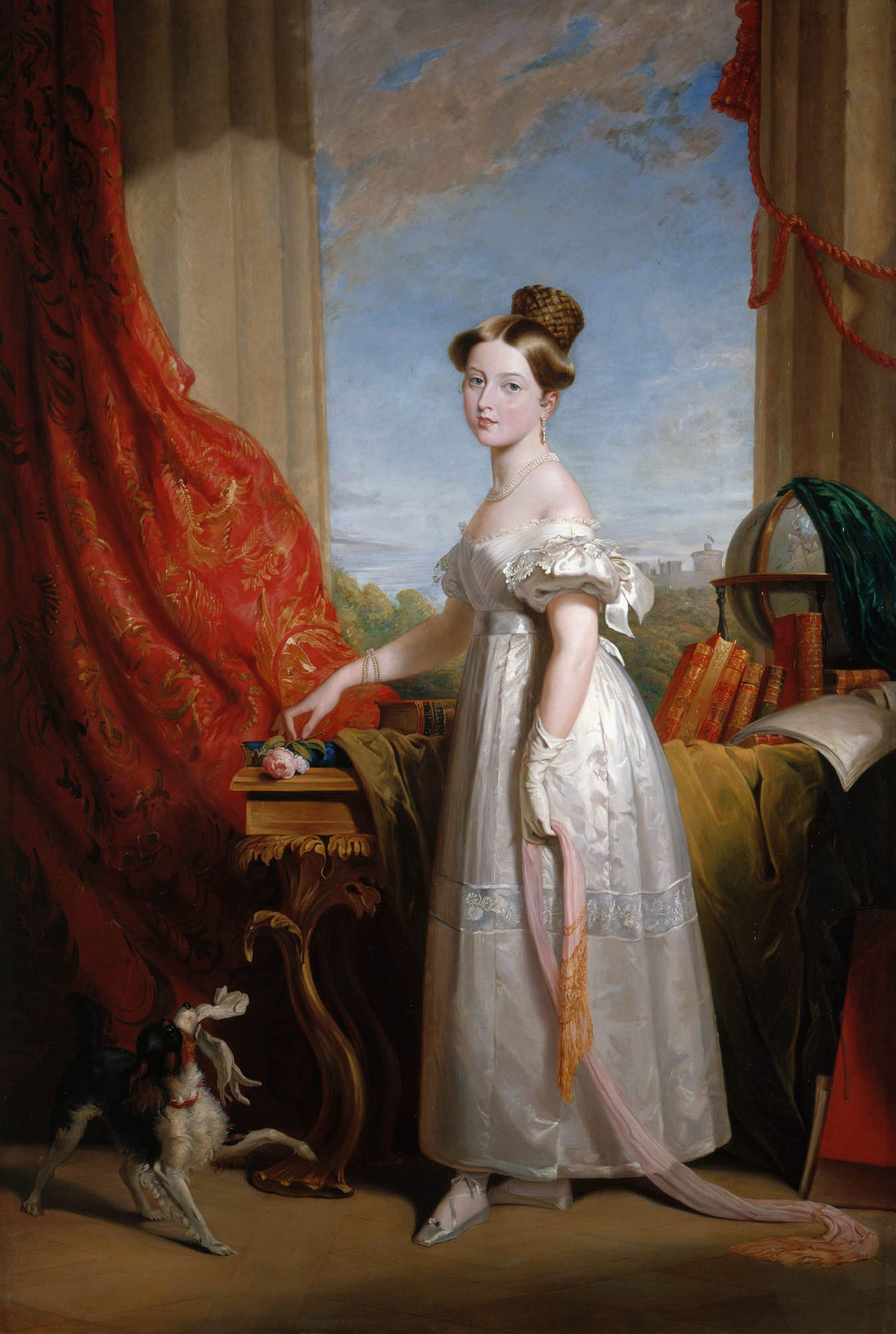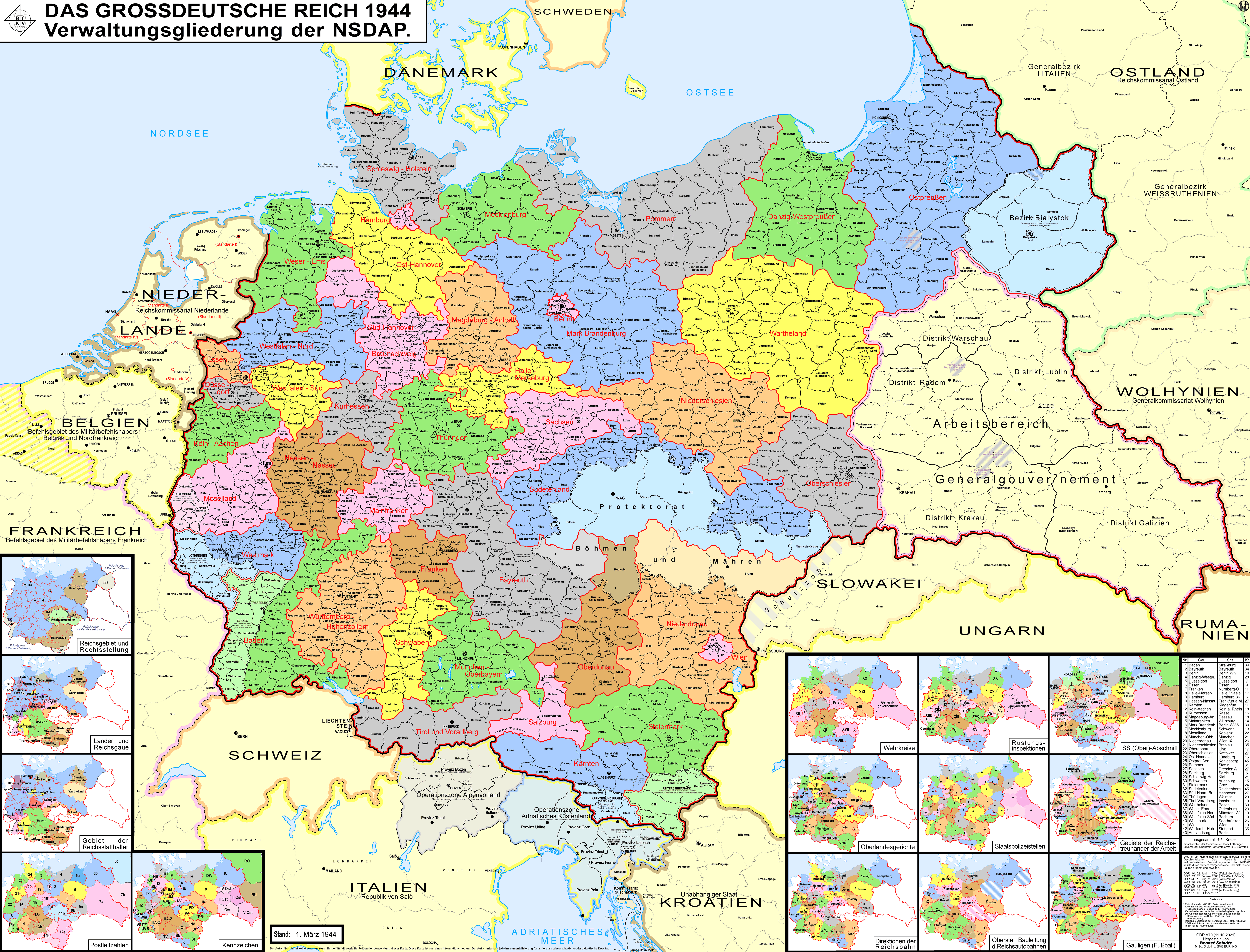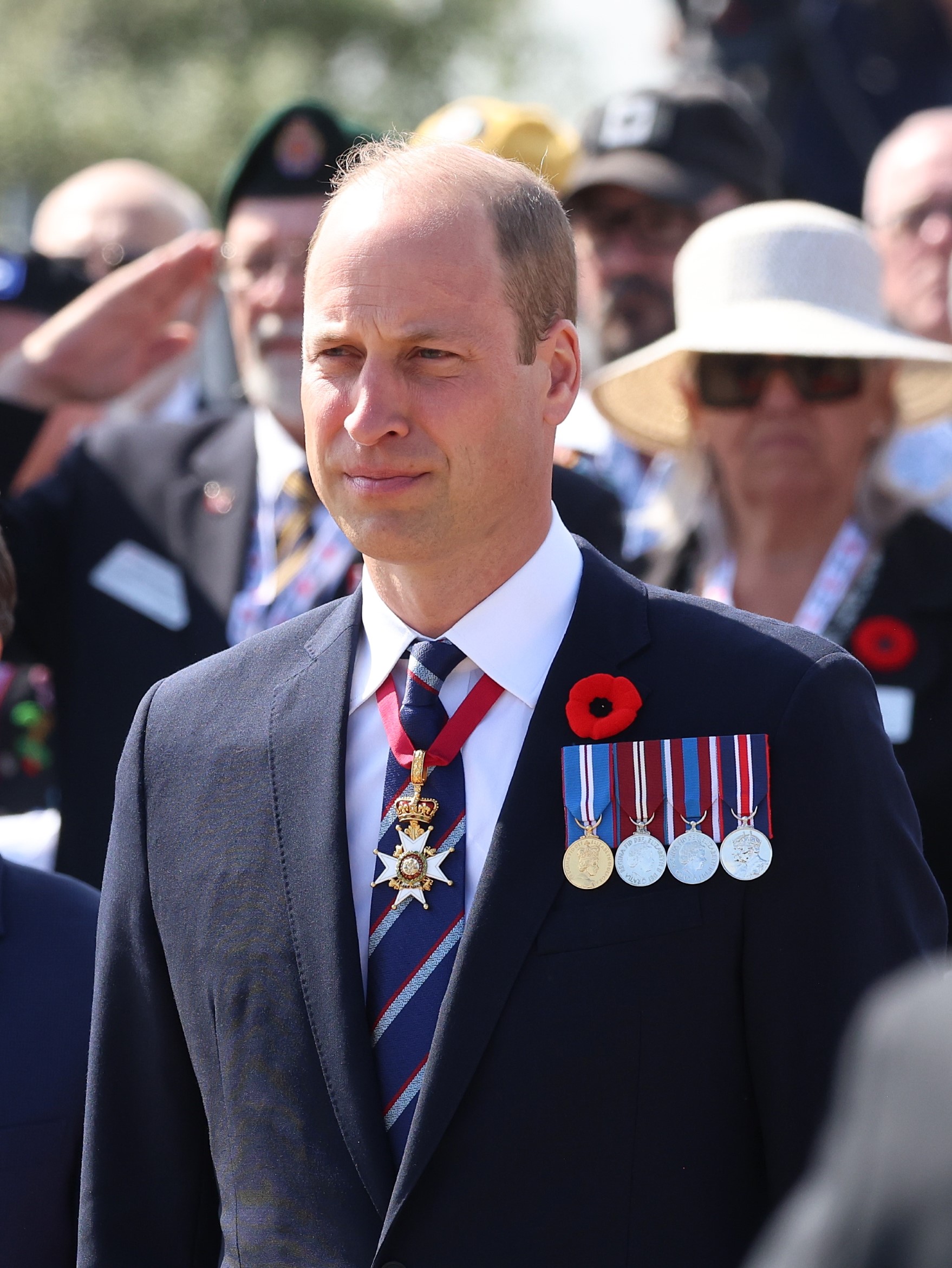|
Charles Edward, Duke Of Saxe-Coburg And Gotha
Charles Edward (Leopold Charles Edward George Albert; 19 July 18846 March 1954) was at various points in his life a British prince, a German duke, and a Nazi politician. He was the last ruling duke of Saxe-Coburg and Gotha, a state of the German Empire, from 30 July 1900 to 14 November 1918. He later held multiple positions in the Nazi regime, including leader of the German Red Cross, and acted as an unofficial diplomat for the German government. Charles Edward's parents were Prince Leopold, Duke of Albany, and Princess Helen of Waldeck and Pyrmont. His paternal grandparents were Queen Victoria of the United Kingdom and Prince Albert of Saxe-Coburg and Gotha. Prince Leopold died before his son's birth. Charles Edward was born in Surrey, England, and brought up as a British prince. He was a sickly child who developed a close relationship with his grandmother and his only sibling, Alice. He was privately educated, including at Eton College. In 1899, Charles Edward was selec ... [...More Info...] [...Related Items...] OR: [Wikipedia] [Google] [Baidu] |
Sturmabteilung
The (; SA; or 'Storm Troopers') was the original paramilitary organisation under Adolf Hitler and the Nazi Party of Germany. It played a significant role in Adolf Hitler's rise to power, Hitler's rise to power in the 1920s and early 1930s. Its primary purposes were providing protection for Nazi rallies and assemblies, disrupting the meetings of opposing parties, fighting against the paramilitary units of the opposing parties, especially the ''Roter Frontkämpferbund'' of the Communist Party of Germany (KPD) and the ''Reichsbanner Schwarz-Rot-Gold'' of the Social Democratic Party of Germany (SPD), and intimidating Romani people, Romani, trade unionists, and especially Jews. The SA were colloquially called Brownshirts () because of the colour of their Uniforms and insignia of the Sturmabteilung, uniform's shirts, similar to Benito Mussolini's Blackshirts. The official uniform of the SA was a brown shirt with a brown tie. The color came about because a large shipment of Paul von ... [...More Info...] [...Related Items...] OR: [Wikipedia] [Google] [Baidu] |
Colonel-in-Chief
Colonel-in-Chief is a ceremonial position in an army regiment. It is in common use in several Commonwealth armies, where it is held by the regiment's patron, usually a member of the royal family. Some armed forces take a light-hearted approach to the position, appointing animals or characters as colonel-in-chief. The Norwegian Army, for example, appointed a king penguin named Sir Nils Olav as a colonel-in-chief.Norwegian Consulate in Edinburgh. History Historically a ''colonel-in-chief'' was the ceremonial head of a , usually a member of a European country's royal family. The practice extends at least back to 1740 in |
Queen Victoria
Victoria (Alexandrina Victoria; 24 May 1819 – 22 January 1901) was Queen of the United Kingdom of Great Britain and Ireland from 20 June 1837 until Death and state funeral of Queen Victoria, her death in January 1901. Her reign of 63 years and 216 days, which was List of monarchs in Britain by length of reign, longer than those of any of her predecessors, constituted the Victorian era. It was a period of industrial, political, scientific, and military change within the United Kingdom of Great Britain and Ireland, United Kingdom, and was marked by a great expansion of the British Empire. In 1876, the British parliament voted to grant her the additional title of Empress of India. Victoria was the daughter of Prince Edward, Duke of Kent and Strathearn (the fourth son of King George III), and Princess Victoria of Saxe-Coburg-Saalfeld. After the deaths of her father and grandfather in 1820, she was Kensington System, raised under close supervision by her mother and her Comptrol ... [...More Info...] [...Related Items...] OR: [Wikipedia] [Google] [Baidu] |
Princess Helen Of Waldeck And Pyrmont
Princess Helen of Waldeck and Pyrmont (Helen Frederica Augusta; 17 February 1861 – 1 September 1922), later Duchess of Albany, was a member of the British royal family by marriage. She was the fifth daughter and child of George Victor, Prince of Waldeck and Pyrmont, and his first wife, Princess Helena of Nassau. Family Helen was born in Arolsen, capital of the Principality of Waldeck and Pyrmont, in Germany. She was the sister of Friedrich, Prince of Waldeck and Pyrmont, Friedrich, last reigning Prince of Waldeck and Pyrmont; Princess Marie of Waldeck and Pyrmont, Marie, the first wife of William II of Württemberg; and of Emma of Waldeck and Pyrmont, Emma, queen consort of William III of the Netherlands (and mother of Wilhelmina of the Netherlands, Queen Wilhelmina). Marriage Along with Emma and a third sister, Princess Pauline of Waldeck and Pyrmont, Pauline, Helen was considered as a second wife for William III of the Netherlands. She later met with Prince Leopold, Duke ... [...More Info...] [...Related Items...] OR: [Wikipedia] [Google] [Baidu] |
Nazi Regime
Nazi Germany, officially known as the German Reich and later the Greater German Reich, was the German state between 1933 and 1945, when Adolf Hitler and the Nazi Party controlled the country, transforming it into a totalitarian dictatorship. The Third Reich, meaning "Third Realm" or "Third Empire", referred to the Nazi claim that Nazi Germany was the successor to the earlier Holy Roman Empire (800–1806) and German Empire (1871–1918). The Third Reich, which the Nazis referred to as the Thousand-Year Reich, ended in May 1945, after 12 years, when the Allies defeated Germany and entered the capital, Berlin, ending World War II in Europe. After Hitler was appointed Chancellor of Germany in 1933, the Nazi Party began to eliminate political opposition and consolidate power. A 1934 German referendum confirmed Hitler as sole '' Führer'' (leader). Power was centralised in Hitler's person, and his word became the highest law. The government was not a coordinated, coopera ... [...More Info...] [...Related Items...] OR: [Wikipedia] [Google] [Baidu] |
State Of The German Empire
The German Empire consisted of 25 constituent states and an imperial territory, the largest of which was Prussia. These states, or ''Staaten'' (or ''Bundesstaaten'', i.e. federated states, a name derived from the previous North German Confederation; they became known as ''Länder'' during the Weimar Republic) each had votes in the Bundesrat, which gave them representation at a federal level. Several of these states had gained sovereignty following the dissolution of the Holy Roman Empire. Others were created as sovereign states after the Congress of Vienna in 1815. Territories were not necessarily contiguous, such as Bavaria, or Oldenburg—many existed in several parts (enclaves and exclaves), as a result of historical acquisitions, or, in several cases, divisions of the ruling family trees. Kingdoms *Kingdom of Bavaria *Kingdom of Prussia (itself subdivided into provinces; including the Duchy of Saxe-Lauenburg ruled in personal union until annexed 1 July 1876) *Kingdom of ... [...More Info...] [...Related Items...] OR: [Wikipedia] [Google] [Baidu] |
Duke Of Saxe-Coburg And Gotha
Saxe-Coburg and Gotha (), or Saxe-Coburg-Gotha ( ), was an Ernestine duchy in Thuringia ruled by a branch of the House of Wettin, consisting of territories in the present-day states of Thuringia and Bavaria in Germany. It lasted from 1826 to 1918. In November 1918, Charles Edward, Duke of Saxe-Coburg and Gotha, was forced to abdicate. In 1920, the northern part of the duchy (since 1918 the Free State of Gotha; culturally and linguistically Thuringian) was merged with six other Thuringian free states to form the Free State of Thuringia: Saxe-Weimar-Eisenach (until 1918 a grand duchy), Saxe-Altenburg and Saxe-Meiningen (until 1918 duchies), Schwarzburg-Rudolstadt and Schwarzburg-Sondershausen (until 1918 principalities), as well as the People's State of Reuss (until 1918 the principalities of Reuss-Gera and Reuss-Greiz). The southern part of the duchy (since 1918 the Free State of Coburg; culturally and linguistically Franconian), as southernmost of the Thuringian states, ... [...More Info...] [...Related Items...] OR: [Wikipedia] [Google] [Baidu] |
Federal Prince
Federal prince (, "Princes of the Federation") was the generic term for the royal heads of state (monarchs) of the various states making up the German Empire, with the exception of the states that were republics and Alsace-Lorraine which had a special status. The empire was a federal state, with its constituent states remaining sovereign states. Among the states, the majority were monarchies, 3 states were republics and Alsace-Lorraine was an imperial territory ruled by a steward. The states became part of the German Empire by an 1871 treaty. The head of the empire was granted the title German Emperor (with the title "Emperor of Germany" being deliberately avoided), and was simultaneously a federal prince as King of Prussia, the sovereign of its largest federal state. Of the princely heads of state, 4 held the title King (König) (the Kings of Prussia, Bavaria, Saxony, and Württemberg), 6 held the title Grand Duke (Großherzog), 5 held the title Duke (Herzog), and 7 held the title ... [...More Info...] [...Related Items...] OR: [Wikipedia] [Google] [Baidu] |
British Prince
Prince of the United Kingdom of Great Britain and Northern Ireland is a royal title normally granted to sons and grandsons of reigning and past British monarchs, plus consorts of female monarchs (by letters patent). The title is granted by the reigning monarch, who is the fount of all honours, through the issuing of letters patent as an expression of the royal will. Individuals holding the title of prince will usually also be granted the style of His Royal Highness (HRH). When a British prince marries, his wife becomes a British princess; however, she is addressed by the feminine version of the husband's senior title on his behalf, either a princely title or a peerage. Traditionally, all wives of male members of the British royal family, the aristocracy, and members of the public take the style and title of their husbands. An example of this case is Princess Michael of Kent, the wife of King Charles III's first cousin once removed Prince Michael of Kent. There is also the ... [...More Info...] [...Related Items...] OR: [Wikipedia] [Google] [Baidu] |
Herzog
(; feminine ; masculine plural ; feminine plural ) is a German hereditary title held by one who rules a territorial duchy, exercises feudal authority over an estate called a duchy, or possesses a right by law or tradition to be referred to by the ducal title. The word is usually translated by the English ''duke'' and the Latin '' dux''. Generally, a ranks below a king and above a ('count'). Whether the title is deemed higher or lower than titles translated into English as ''prince'' () is dependent upon the language, country, and era in which the titles coexisted. History is not related to (), but is derived from the Middle High German meaning 'army' and meaning 'to move' or 'to pull' (related to the modern English verb '' tug''), a military leader (compare to Slavic voivode). and are roots of the modern German words and of the same meanings (also: , 'to go into battle'). It may have originated from the Proto-Germanic '' Harjatugô'', a warrior who was elected to ... [...More Info...] [...Related Items...] OR: [Wikipedia] [Google] [Baidu] |
Reichstag (Nazi Germany)
The Reichstag (, "Diet (assembly), Diet of the Reich, Realm"), officially the Greater German Reichstag () after 1938, was the national parliament of Nazi Germany from 1933 to 1945. Following the Nazi seizure of power and the enactment of the Enabling Act of 1933, it functioned purely as a Rubber stamp (politics), rubber stamp for the actions of Adolf Hitler's dictatorshipalways by unanimous consentand as a forum to listen to Hitler's speeches. In this purely ceremonial role, the Reichstag convened only 20 times, the last on 26 April 1942. The President of the Reichstag () throughout this period was Hermann Göring. During this period, the Reichstag was sometimes derisively referred to by the German public as the "''teuerste Gesangsverein Deutschlands''" (the most expensive singing club in Germany) due to frequent singing of Deutschlandlied, the national anthem during sessions. To avoid holding scheduled elections during World War II, in 1943 Hitler extended the term of office of ... [...More Info...] [...Related Items...] OR: [Wikipedia] [Google] [Baidu] |
Otto Gessler
Otto Karl Gessler (or Geßler) (6 February 1875 – 24 March 1955) was a liberal German politician during the Weimar Republic. From 1910 until 1914, he was mayor of Regensburg and from 1913 to 1919 mayor of Nuremberg. He served in numerous Weimar cabinets, most notably as ''Reichswehrminister'' (Minister of Defence) from 1920 to 1928. Early life Otto Karl Gessler was born on 6 February 1875 in Ludwigsburg in the Kingdom of Württemberg as the son of the non-commissioned officer Otto Gessler and his wife Karoline (née Späth). He finished school in 1894 with the Abitur at the ''Humanistisches Gymnasium'' in Dillingen an der Donau. He studied law in Erlangen, Tübingen and Leipzig and received his doctorate there in 1900. Initially, he worked for the judicial service of Leipzig. He then moved to Bavaria and served in various positions in the Bavarian justiciary (1903 clerk in the Bavarian Ministry of Justice, 1904 prosecutor in Straubing, 1905 ''Gewerberichter'' in Munich) b ... [...More Info...] [...Related Items...] OR: [Wikipedia] [Google] [Baidu] |







